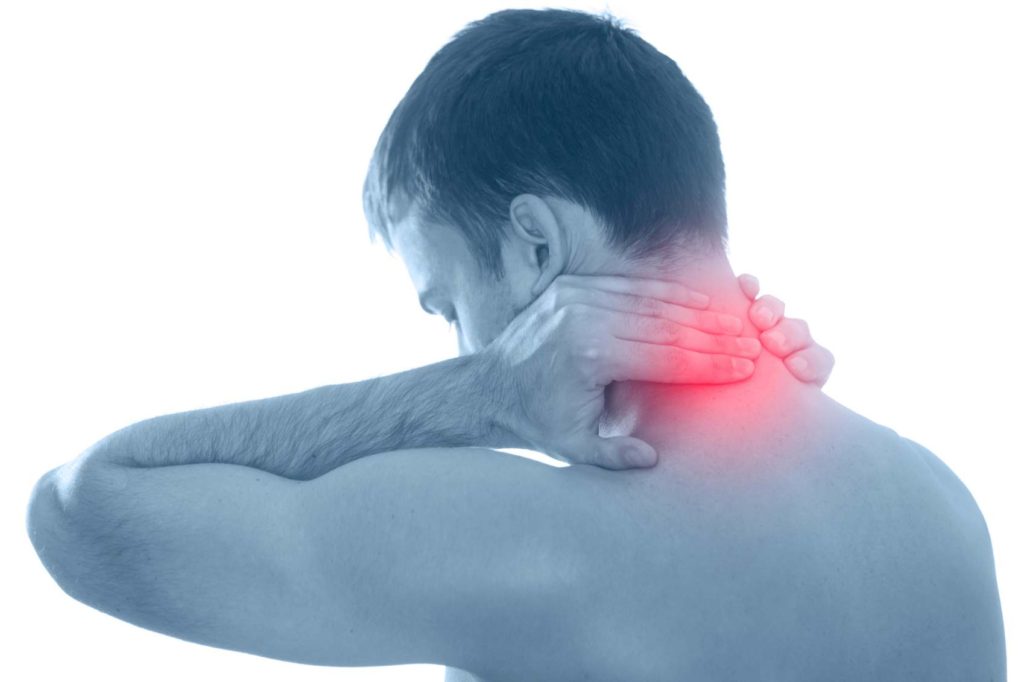Cervical Spondylosis – Symptoms & Treatment

Neck pain is extremely common. It can be caused by many things and is more often associated with aging.
As with the rest of the body, the bones of the neck (cervical spine) is slowly degenerate as we age. This often leads to osteoarthritis or osteoarthritis. Osteoarthritis neck is called cervical spondylosis.
Cervical spondylosis is degeneration of the joints in the neck. The condition occurs more frequently as people age. More than 85% of people over 60 are affected.
Although it is a form of osteoarthritis, cervical spondylosis rarely becomes a crippling or disabling disease.
Degeneration of the discs and bone spurs (osteophytes)
Column, osteoarthritis may appear as the disc degenerates and loses water content. In children and young adults, the discs have a high water content. With aging, our discs start to dry out and weaken. This problem generates a crushing or collapse of the disc spaces and loss of height in these disc spaces.
As the joint surfaces experience more pressure, they also begin to degenerate and develop osteoarthritis, similar to what occurs in the hip joint or knee. The cartilage that covers and protects the joints wears away.
If the cartilage wears completely, it can lead to friction of bone against bone. To compensate for the loss of cartilage, your body may respond by generating new bone in their joint surfaces to help support the vertebrae. Over time, this extra growth -called bump or osteophyte- can reduce the space through which nerves pass (stenosis).
Risk factor’s
There are several factors that increase the risk of cervical spondylosis. All these have been linked to increased risk of neck pain and spondylosis:
- Genetics: If your family has a history of neck pain
- Smoking: clearly linked to increased neck pain
- Occupation: work with many movements of neck and work on his head
- Mental health issues: depression, anxiety
- Injury / trauma: car accident or work injury
Symptoms
The pain caused by cervical spondylosis can be mild to severe. The pain sometimes worsens if the person looks down or up for a long time, or activities such as driving or reading a book. It also improves with rest or if the person lies down.
Additional symptoms include:
- Pain and neck stiffness (may worsen with activity)
- Numbness and weakness in the arms, hands and fingers
- Difficulty walking, loss of balance or weakness in the hands or legs
- muscle spasms in the neck and shoulders
- Headaches
- Sounds / or crackle crackling sensations in the neck with movement
Medical exam
Determine the source of pain is essential to recommend the right treatment and rehabilitation. Therefore, a comprehensive examination is required to determine the cause of neck pain.
Your doctor will do a complete history of the difficulties you are having with your neck. Your doctor may ask you about other illnesses or injuries that happened to the neck. Questions may include: When did you start your neck pain? Have you ever hurt this way before? When your neck hurts, how often and how long it hurts? Is there anything better or worse pain? Have you ever been involved in an accident or suffered a neck injury? Have you ever been treated for neck pain?
A complete physical examination will include your neck, shoulders, arms and often their legs. Tests may include strength, tactile sensation, reflexes, blood flow, flexibility neck and arms, and also how you walk. Your doctor can press your neck and shoulders, and explore painful pressure points or swollen glands.
Nonsurgical Treatment
Physiotherapy. The strengthening and stretching the muscles weakened or distended is usually the first treatment indicated. Your physical therapist may also use cervical traction (neck) and postural therapy. Physical therapy programs vary, but usually last 6 to 8 weeks. The sessions are scheduled 2 or 3 times a week.
Soft collars. These collars limit neck movement and allow the neck muscles rest. Soft collars should only be used for short periods of time because prolonged use can reduce the strength of the neck muscles.
Ice, heat, other modalities. Careful use of ice, heat, massage and other local treatments can help relieve symptoms.
Corticosteroid injections. Many patients find relief from short – term pain with injections of corticosteroids. Several types of these injections are routinely performed. The most common procedures for neck pain include:
Cervical epidural blockage. In this procedure, a steroid drug and anesthetic in the cover adjacent the spinal cord (epidural” space) space is injected. This procedure is typically used for neck pain and / or arm it may be caused by a herniated cervical disc, which is also known as radiculopathy or “pinched nerve”.
Lock cervical articular surface. In this procedure, a corticosteroid drug and anesthetic is injected into the capsule of the articular surface. The joint surfaces are located on the back of the neck and provide stability and allow movement. These joints can develop osteoarthritic changes that may contribute to neck pain.
Radio frequency ablation. This procedure is used in some cases of chronic neck pain. It can be used for diagnosis and for treatment of a potentially painful joint.
Surgical treatment
It is not uncommon for people who only have cervical spondylosis and neck pain are treated with surgery. Surgery is reserved for patients who have severe pain that is not relieved by other treatment. Some patients with severe pain unfortunately not be candidates for surgery. This is due to the widespread nature of your osteoarthritis, other medical problems or other causes of pain, such as fibromyalgia.
People with progressive neurological symptoms such as weakness, numbness or falls, are more likely than surgery to help them.

